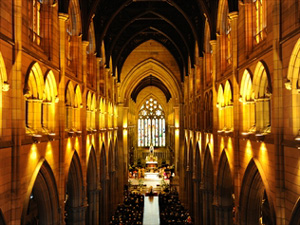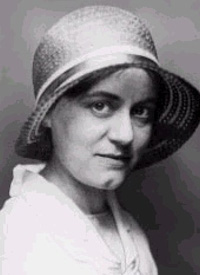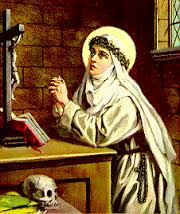2013
(Vatican Radio) From the future of the Vatican bank to the role of women in the Church, from Vatileaks to the highlights of his pontificate so far: on the flight back from Brazil to Rome Pope Francis gave journalists free rein to ask questions about the Church and about his own challenges as successor of St Peter. Philippa Hitchen takes a look at what the Holy Father had to say…..
In the impromptu press conference aboard the papal plane, journalists spent over an hour questioning the Pope about his recent visit to Brazil for World Youth Day, about plans for future foreign trips, about his ecumenical vision and about the day to day business of dealing with scandals and other obstacles within the Vatican walls.
Describing himself as tired, but spiritually renewed, the Pope talked about the very positive experience of meeting with three million young people in Brazil. He spoke of the security concerns, but stressed that it’s madness to try and separate a bishop from his people.
Discussing future papal journeys, he confirmed he’ll be travelling to Sardinia in September, to Assisi in October and said he hopes to visit his relatives in northern Italy because they’ve been asking to see him. He also spoke of plans for a meeting with Ecumenical Patriarch Bartholomew in Jerusalem, but said there was no definite decision yet. He also confirmed that former Popes John XXIII and John Paul II will be canonized at the same time, either this October or, most likely, the week after Easter next year.
Asked about relations with the Orthodox Church, Pope Francis spoke of the sense of beauty and adoration in the Eastern liturgies and how a consumerist mentality in the West has weakened our sense God. The author Dostoevsky, he added, should be required reading for anyone seeking to understand the soul of Russia and its people.
Commenting on the Vatican bank, as the Institute for Works of Religion is commonly called, Pope Francis acknowledged the difficulties in deciding whether to change its status or close it altogether – he said he was relying on the advice of a commission of experts called in to promote ‘honesty and transparency’.
Speaking of other problems within the administration of the Holy See, including rumours of a ‘gay lobby’ within the Vatican, Pope Francis said there are many saintly people working in the Curia but also those who are not so saintly and cause scandals which harm the Church. Quoting from the Catechism of the Catholic Church, he said that people with homosexual tendencies must not be excluded but should be integrated into society. “If a person is gay and seeks God and has good will, who am I to judge him?” he asked.
Questioned about the role of women in the Church, the Pope said the issue of ordination is ‘a closed door’ but he said he would like to see more women in leadership roles. Just as Mary was more important than the Apostles, he said, so women today are more important than bishops and priests and there is a great need for theology to explore and explain this better.
Finally on a very personal level, Pope Francis shared how he misses the freedom of being able to walk and meet people in the streets, how he lives in the Santa Martha guesthouse because he needs to talk to others and how he has always found pleasure as a priest, bishop and now pastor of the universal Church in following the Lord’s will.
SHARED FROM RADIO VATICANA
In the impromptu press conference aboard the papal plane, journalists spent over an hour questioning the Pope about his recent visit to Brazil for World Youth Day, about plans for future foreign trips, about his ecumenical vision and about the day to day business of dealing with scandals and other obstacles within the Vatican walls.
Describing himself as tired, but spiritually renewed, the Pope talked about the very positive experience of meeting with three million young people in Brazil. He spoke of the security concerns, but stressed that it’s madness to try and separate a bishop from his people.
Discussing future papal journeys, he confirmed he’ll be travelling to Sardinia in September, to Assisi in October and said he hopes to visit his relatives in northern Italy because they’ve been asking to see him. He also spoke of plans for a meeting with Ecumenical Patriarch Bartholomew in Jerusalem, but said there was no definite decision yet. He also confirmed that former Popes John XXIII and John Paul II will be canonized at the same time, either this October or, most likely, the week after Easter next year.
Asked about relations with the Orthodox Church, Pope Francis spoke of the sense of beauty and adoration in the Eastern liturgies and how a consumerist mentality in the West has weakened our sense God. The author Dostoevsky, he added, should be required reading for anyone seeking to understand the soul of Russia and its people.
Commenting on the Vatican bank, as the Institute for Works of Religion is commonly called, Pope Francis acknowledged the difficulties in deciding whether to change its status or close it altogether – he said he was relying on the advice of a commission of experts called in to promote ‘honesty and transparency’.
Speaking of other problems within the administration of the Holy See, including rumours of a ‘gay lobby’ within the Vatican, Pope Francis said there are many saintly people working in the Curia but also those who are not so saintly and cause scandals which harm the Church. Quoting from the Catechism of the Catholic Church, he said that people with homosexual tendencies must not be excluded but should be integrated into society. “If a person is gay and seeks God and has good will, who am I to judge him?” he asked.
Questioned about the role of women in the Church, the Pope said the issue of ordination is ‘a closed door’ but he said he would like to see more women in leadership roles. Just as Mary was more important than the Apostles, he said, so women today are more important than bishops and priests and there is a great need for theology to explore and explain this better.
Finally on a very personal level, Pope Francis shared how he misses the freedom of being able to walk and meet people in the streets, how he lives in the Santa Martha guesthouse because he needs to talk to others and how he has always found pleasure as a priest, bishop and now pastor of the universal Church in following the Lord’s will.
SHARED FROM RADIO VATICANA
8 NEW STATUES OF FEMALE SAINTS IN ST. MARY'S CATHEDRAL IN AUSTRALIA
Catholic Communications, Sydney Archdiocese,
29 Jul 2013
29 Jul 2013

Eight statues of female saints realisation of William Wardell's vision for St Mary's Cathedral
Hand-crafted meticulously sculpted statues of eight female saints will take pride of place in the Lady Chapel of St Mary's Cathedral fulfilling architect William Wardell's original vision for the Cathedral.
Earlier this year, the Archbishop of Sydney, Cardinal George Pell commissioned the world renown Spanish company Talleres de Arte Granda, to create sculptures of the eight female saints. This important commission follows the 16 specially-sculpted statues of the Apostles, St Paul, St John the Baptist and the prophets, Elijah and Moses which were also created by the Talleres de Arte Granda and installed in the ornate marble reredos behind the Cathedral's main altar earlier this year.
When Wardell designed the reredos 133 years ago 17 niches were designed to hold statue replicas of the 12 Apostles, St Paul and St John the Baptist, the prophets and at the centre a sculpture of Our Lady Help of Christians, patron saint of Australia.
The statue of Our Lady was installed almost immediately but for almost one and a half centuries the other 16 niches remained empty.

St Mary of the Cross MacKillop
The foresight of His Eminence helped correct this and now Wardell's plans for the Cathedral will be further fulfilled when the statues of eight female saints are completed and installed in the Lady Chapel early next year.
However unlike the saints installed in the reredos this will be the first time artisans at the 120-year-old Talleres de Arte Granda have tackled sculptures of so many female saints who will take pride of place in the Lady Chapel. Currrently, the company's expert carvers, painters and ecclesiastical experts are involved in research, pouring over paintings of the female saints, and for the more recently canonised saints, studying any existing photographs to ensure their depiction as accurate as possible.
The eight female saints commissioned by His Eminence include St Mary of the Cross MacKillop and Blessed Teresa of Calcutta, or Mother Teresa as she is still popularly known. Three great Doctors of the Church will also be among the statues created by the famous Spanish workshops: St Catherine of Siena, St Hildegarde of Bingen and St Teresa of Avila.
The remaining three statues are perhaps less well known but no less important.

St Teresia Benedicta of the Cross was a Jewish convert who became a nun and died at Auschwitz in 1942
These statues will be of St Monica of Hippo, the fourth century mother of St Augustine and patron saint of married women, housewives, mothers, widows, victims of domestic abuse and victims of adultery and unfaithfulness; St Maria Goretti, the nineteenth century's Italian 11-year-old virgin-martyr and now patron saint of chastity, rape victims, youth, teenage girls, purity and forgiveness; and the Jewish-born Catholic convert and religious, St Teresia Benedicta of the Cross who died at Auschwitz in 1942. Canonised by Blessed John Paul II in 1998 she is now one of the six patron saints of Europe.
Thanks to the generosity of the Friends of St Mary's Cathedral, funds needed to create seven of the eight saints have already been raised.
"We're still looking for a sponsor for the statue of St Teresia Benedicta or St Edith Stein as many still refer to her," says Helen Hofman, House and Events Manager at St Mary's Cathedral, and a member of the Friends of the Cathedral.
St Teresia Benedicta was born Edith Stein, the daughter of a Jewish family in Breslau, Germany. Exceptionally gifted as child with a love of learning, by her teenage years she had repudiated Judaism and had declared herself an atheist.
Awarded a doctor of philosophy at just 25, her life changed forever five years later after spending part of the summer in 1921 reading St Teresa of Avila's autobiography. The impact was instant and profound and she not only rediscovered her belief in God but made the decision to become a Roman Catholic.

St Teresa of Avila will be one of the eight female saints represented in the Lady Chapel
Baptised into the faith on 1 January, 1922, St Teresia resigned from her research role at Freiburg University and became a teacher at the Dominicans nuns' school in Speyer, Germany. During her time there she translated Thomas Aquinas' De Veritate into German and developed a deep knowledge of Roman Catholic teachings and philosophy.
By 1933 the Nazis' increasing power and anti-Semitic legislation had forced her to give up her position with Germany's Institute of Pedagogy. The legislation and rise of Hitler appalled her and in a letter to His Holiness Pope Pius XI she asked him to publicly denounce the Nazi regime and "put a stop to this abuse of Christ's name."
A short time later that same year, she entered the Discalced Carmelite Monastery in Cologne and after taking her vows, took the name Teresia Benedicta of the Cross.
Although St Teresia did not receive an answer to her letter, and it not known if the Pontiff even saw it, by 1937 Pope Pius XI had issued an encyclical written in German in which he harshly criticised Nazism, listed breaches of the concord signed between Germany and the Church and condemned anti-Semitism.
Germany took no notice and the Nazi threat against Jews continued to escalate with hundreds of thousands across Europe rounded up and sent to concentration camps.

St Catherine of Siena one of the great Doctors of the Church
In a bid to keep St Teresia safe, the Discalced Carmelites arranged for her to be transferred to a monastery in the Netherlands. But by then nowhere in Europe was safe either for Jews or for those who had converted to other faiths.
In July 1942 St Teresia and her sister Rosa, who was also a convert to Catholicism, were arrested and deported to Auschwitz. Less than a month later, St Teresia and her sister were herded into the gas chambers where they were exterminated on 9 August 1942.
St Teresia was just 50 years old.
Anyone wishing to donate funds to help sponsor the eighth and final statue commissioned for the Lady Chapel should contact Dieter Koch, Property Manager for the Archdiocese of Sydney by emailing Dieter.Koch@sydneycatholic.org or by contacting St Mary's Cathedral by phoning 02 9220 0400.
SHARED FROM ARCHDIOCESE OF SYDNEY
FBI ANNOUNCES RESCUE OF 105 CHILDREN FROM SEXUAL SLAVERY IN USA
UCAN/USA TODAY REPORT

Largest ever US law swoop on child sexual slavery
Picture: USA Today/FBI
- Kevin Johnson for USA Today
- The FBI announced Monday the arrests of 159 people and recovery of 105 children involved in child prostitution rings across the country. The 76-city sweep, conducted in the past three days, represents the largest such law enforcement action focused on children forced into sexual slavery, federal authorities said.
Assistant FBI Director Ron Hosko, head of the bureau's criminal division, said the children ranged from 13 to 17 years old. The youngest of the victims was allegedly being offered up by her father, who also was allegedly involved in videotaping his daughter's sexual encounters.
"We have victims whose new normal is sexual abuse,'' Hosko said. "We are trying to take this crime out of the shadows and put a spotlight on it.''
In operations involving 230 separate law enforcement agencies, authorities either made arrests or child recoveries from Atlanta to Los Angeles. The weekend action, called Operation Cross Country, also is the latest in a national campaign that has helped recover 2,700 children since 2005.
Hosko said the children, generally recruited from foster care or group homes, were being offered up on Internet sites, at truck stops, casinos and street corners.
SHARED FROM UCAN/USA TODAY
PRIEST MISSING IN SYRIA - PRAYERS FOR FR. PAOLO DALL'OGLIO
ASIA NEWS REPORT
In Syria since the 1980s, where he established an Islamo-Christian monastic community, Fr. Paolo dall'Oglio had been expelled by Assad in 2012. He returned occasionally to rebel-controlled Syria where he had friends. News still being verified. The country is in chaos and few see "any light at the end of the tunnel."

Damascus (AsiaNews) - Shock, surprise and caution abound in the Vatican Nunciature in Damascus following reports - yet to be confirmed - of the kidnapping of the Jesuit Fr. Paolo dall'Oglio (see photo).
"Usually, when he is in Syria, we speak over the phone - Nuncio Msgr. Mario Zenari tells AsiaNews. "So far I haven't heard from him at all. I only learned the news this morning and I am shocked. We will have to wait to see if it is true" .
The Italian Foreign Ministry is also checking the news.
According to some agencies, Fr. Paolo entered Syria through the north, in an area controlled by the rebels and was kidnapped in Raqqa, by fundamentalist groups, part of the group for the Islamic State of Iraq and the Levant, enemies of Assad.
"I'm surprised - adds the nuncio - that this happened to him. He is known in those areas, and enjoys some respect in rebel held areas."
Since 1982, the Roman born Jesuit of 58 has worked for the restoration of Catholic monastery Mar Musa (Monastery of Saint Moses the Abyssinian), in the desert north of the Syrian capital, establishing a monastic community open to dialogue with Islam . At the outbreak of the so-called "Arab Spring" in Damascus, Fr. Dall'Oglio took a position that was critical of the Assad regime and so, in 2011, Damascus decreed his expulsion, which took place later in 2012. Since leaving the Country, Fr. Dall'Oglio has often returned to the north controlled by the Syrian rebels.
Archbishop Zenari pushes for caution: "Here in Syria news has often been reported that has later been proven false or inaccurate, such as the reports of three monks having been beheaded, they were not monks, or reports of the release of the two Orthodox bishops, also proven false."
"In the end - said the nuncio - nothing really surprises us anymore here in Syria, given the chaos that reigns. Earlier the situation was clear enough, but now is very complicated and the conflict has become incredibly interwoven. What is really shocking is the suffering of the poor, human rights violations. We must try to understand the intentions of all parties involved, how they move, who is behind what, who is most in the right and who in the wrong and what their main aim is. This is an immense task, and in the meantime the country is falling apart and we can no longer see a light at the end of the tunnel. "
SHARED FROM RADIO VATICANA
In Syria since the 1980s, where he established an Islamo-Christian monastic community, Fr. Paolo dall'Oglio had been expelled by Assad in 2012. He returned occasionally to rebel-controlled Syria where he had friends. News still being verified. The country is in chaos and few see "any light at the end of the tunnel."
Damascus (AsiaNews) - Shock, surprise and caution abound in the Vatican Nunciature in Damascus following reports - yet to be confirmed - of the kidnapping of the Jesuit Fr. Paolo dall'Oglio (see photo).
"Usually, when he is in Syria, we speak over the phone - Nuncio Msgr. Mario Zenari tells AsiaNews. "So far I haven't heard from him at all. I only learned the news this morning and I am shocked. We will have to wait to see if it is true" .
The Italian Foreign Ministry is also checking the news.
According to some agencies, Fr. Paolo entered Syria through the north, in an area controlled by the rebels and was kidnapped in Raqqa, by fundamentalist groups, part of the group for the Islamic State of Iraq and the Levant, enemies of Assad.
"I'm surprised - adds the nuncio - that this happened to him. He is known in those areas, and enjoys some respect in rebel held areas."
Since 1982, the Roman born Jesuit of 58 has worked for the restoration of Catholic monastery Mar Musa (Monastery of Saint Moses the Abyssinian), in the desert north of the Syrian capital, establishing a monastic community open to dialogue with Islam . At the outbreak of the so-called "Arab Spring" in Damascus, Fr. Dall'Oglio took a position that was critical of the Assad regime and so, in 2011, Damascus decreed his expulsion, which took place later in 2012. Since leaving the Country, Fr. Dall'Oglio has often returned to the north controlled by the Syrian rebels.
Archbishop Zenari pushes for caution: "Here in Syria news has often been reported that has later been proven false or inaccurate, such as the reports of three monks having been beheaded, they were not monks, or reports of the release of the two Orthodox bishops, also proven false."
"In the end - said the nuncio - nothing really surprises us anymore here in Syria, given the chaos that reigns. Earlier the situation was clear enough, but now is very complicated and the conflict has become incredibly interwoven. What is really shocking is the suffering of the poor, human rights violations. We must try to understand the intentions of all parties involved, how they move, who is behind what, who is most in the right and who in the wrong and what their main aim is. This is an immense task, and in the meantime the country is falling apart and we can no longer see a light at the end of the tunnel. "
SHARED FROM RADIO VATICANA
TODAY'S SAINT: JULY 30: ST. PETER CHRYSOLOGUS
BISHOP
Feast: July 30
Born at Imola, 406; died there, 450. His biography, first written by Agnellus (Liber pontificalis ecclesiæ Ravennatis) in the ninth century, gives but scanty information about him. He was baptised, educated, and ordained deacon by Cornelius, Bishop of Imola, and was elevated to the Bishopric of Ravenna in 433. There are indications that Ravenna held the rank of metropolitan before this time. His piety and zeal won for him universal admiration, and his oratory merited for him the name Chrysologus. He shared the confidence of Leo the Great and enjoyed the patronage of the Empress Galla Placidia. After his condemnation by the Synod of Constantinople (448), the Monophysite Eutyches endeavoured to win the support of Peter, but without success.
A collection of his homilies, numbering 176, was made by Felix, Bishop of Ravenna (707-17). Some are interpolations, and several other homilies known to be written by the saint are included in other collections under different names. They are in a great measure explanatory of Biblical texts and are brief and concise. He has explained beautifully the mystery of the Incarnation, the heresies of Arius and Eutyches, and the Apostles' Creed, and he dedicated a series of homilies to the Blessed Virgin and St. John the Baptist. His works were first edited by Agapitus Vicentinus (Bologna, 1534), and later by D. Mita (Bolonga, 1634), and S. Pauli (Venice, 1775) — the latter collection having been reprinted in P.L., LII. Fr. Liverani ("Spicilegium Liberianum"), Florence, 1863, 125 seq.) edited nine new homilies and published from manuscripts in Italian libraries different readings of several other sermons. Several homilies were translated into German by M. Held (Kempten, 1874).
|
SOURCE: http://www.ewtn.com/saintsHoly/saints/P/stpeterchrysologus.asp#ixzz1TaskeI61
TODAY'S MASS ONLINE : TUES. JULY 30, 2013
Tuesday of the Seventeenth Week in Ordinary Time
Lectionary: 402
Reading 1 EX 33:7-11; 34:5B-9, 28
The tent, which was called the meeting tent,
Moses used to pitch at some distance away, outside the camp.
Anyone who wished to consult the LORD
would go to this meeting tent outside the camp.
Whenever Moses went out to the tent, the people would all rise
and stand at the entrance of their own tents,
watching Moses until he entered the tent.
As Moses entered the tent, the column of cloud would come down
and stand at its entrance while the LORD spoke with Moses.
On seeing the column of cloud stand at the entrance of the tent,
all the people would rise and worship
at the entrance of their own tents.
The LORD used to speak to Moses face to face,
as one man speaks to another.
Moses would then return to the camp,
but his young assistant, Joshua, son of Nun,
would not move out of the tent.
Moses stood there with the LORD and proclaimed his name, “LORD.”
Thus the LORD passed before him and cried out,
“The LORD, the LORD, a merciful and gracious God,
slow to anger and rich in kindness and fidelity,
continuing his kindness for a thousand generations,
and forgiving wickedness and crime and sin;
yet not declaring the guilty guiltless,
but punishing children and grandchildren
to the third and fourth generation for their fathers’ wickedness!”
Moses at once bowed down to the ground in worship.
Then he said, “If I find favor with you, O LORD,
do come along in our company.
This is indeed a stiff-necked people;
yet pardon our wickedness and sins,
and receive us as your own.”
So Moses stayed there with the LORD for forty days and forty nights,
without eating any food or drinking any water,
and he wrote on the tablets the words of the covenant,
the ten commandments.
Moses used to pitch at some distance away, outside the camp.
Anyone who wished to consult the LORD
would go to this meeting tent outside the camp.
Whenever Moses went out to the tent, the people would all rise
and stand at the entrance of their own tents,
watching Moses until he entered the tent.
As Moses entered the tent, the column of cloud would come down
and stand at its entrance while the LORD spoke with Moses.
On seeing the column of cloud stand at the entrance of the tent,
all the people would rise and worship
at the entrance of their own tents.
The LORD used to speak to Moses face to face,
as one man speaks to another.
Moses would then return to the camp,
but his young assistant, Joshua, son of Nun,
would not move out of the tent.
Moses stood there with the LORD and proclaimed his name, “LORD.”
Thus the LORD passed before him and cried out,
“The LORD, the LORD, a merciful and gracious God,
slow to anger and rich in kindness and fidelity,
continuing his kindness for a thousand generations,
and forgiving wickedness and crime and sin;
yet not declaring the guilty guiltless,
but punishing children and grandchildren
to the third and fourth generation for their fathers’ wickedness!”
Moses at once bowed down to the ground in worship.
Then he said, “If I find favor with you, O LORD,
do come along in our company.
This is indeed a stiff-necked people;
yet pardon our wickedness and sins,
and receive us as your own.”
So Moses stayed there with the LORD for forty days and forty nights,
without eating any food or drinking any water,
and he wrote on the tablets the words of the covenant,
the ten commandments.
Responsorial Psalm PS 103:6-7, 8-9, 10-11, 12-13
R. (8a) The Lord is kind and merciful.
The LORD secures justice
and the rights of all the oppressed.
He has made known his ways to Moses,
and his deeds to the children of Israel.
R. The Lord is kind and merciful.
Merciful and gracious is the LORD,
slow to anger and abounding in kindness.
He will not always chide,
nor does he keep his wrath forever.
R. The Lord is kind and merciful.
Not according to our sins does he deal with us,
nor does he requite us according to our crimes.
For as the heavens are high above the earth,
so surpassing is his kindness toward those who fear him.
R. The Lord is kind and merciful.
As far as the east is from the west,
so far has he put our transgressions from us.
As a father has compassion on his children,
so the LORD has compassion on those who fear him.
R. The Lord is kind and merciful.
The LORD secures justice
and the rights of all the oppressed.
He has made known his ways to Moses,
and his deeds to the children of Israel.
R. The Lord is kind and merciful.
Merciful and gracious is the LORD,
slow to anger and abounding in kindness.
He will not always chide,
nor does he keep his wrath forever.
R. The Lord is kind and merciful.
Not according to our sins does he deal with us,
nor does he requite us according to our crimes.
For as the heavens are high above the earth,
so surpassing is his kindness toward those who fear him.
R. The Lord is kind and merciful.
As far as the east is from the west,
so far has he put our transgressions from us.
As a father has compassion on his children,
so the LORD has compassion on those who fear him.
R. The Lord is kind and merciful.
Gospel MT 13:36-43
Jesus dismissed the crowds and went into the house.
His disciples approached him and said,
“Explain to us the parable of the weeds in the field.”
He said in reply, “He who sows good seed is the Son of Man,
the field is the world, the good seed the children of the Kingdom.
The weeds are the children of the Evil One,
and the enemy who sows them is the Devil.
The harvest is the end of the age, and the harvesters are angels.
Just as weeds are collected and burned up with fire,
so will it be at the end of the age.
The Son of Man will send his angels,
and they will collect out of his Kingdom
all who cause others to sin and all evildoers.
They will throw them into the fiery furnace,
where there will be wailing and grinding of teeth.
Then the righteous will shine like the sun
in the Kingdom of their Father.
Whoever has ears ought to hear.”
His disciples approached him and said,
“Explain to us the parable of the weeds in the field.”
He said in reply, “He who sows good seed is the Son of Man,
the field is the world, the good seed the children of the Kingdom.
The weeds are the children of the Evil One,
and the enemy who sows them is the Devil.
The harvest is the end of the age, and the harvesters are angels.
Just as weeds are collected and burned up with fire,
so will it be at the end of the age.
The Son of Man will send his angels,
and they will collect out of his Kingdom
all who cause others to sin and all evildoers.
They will throw them into the fiery furnace,
where there will be wailing and grinding of teeth.
Then the righteous will shine like the sun
in the Kingdom of their Father.
Whoever has ears ought to hear.”


